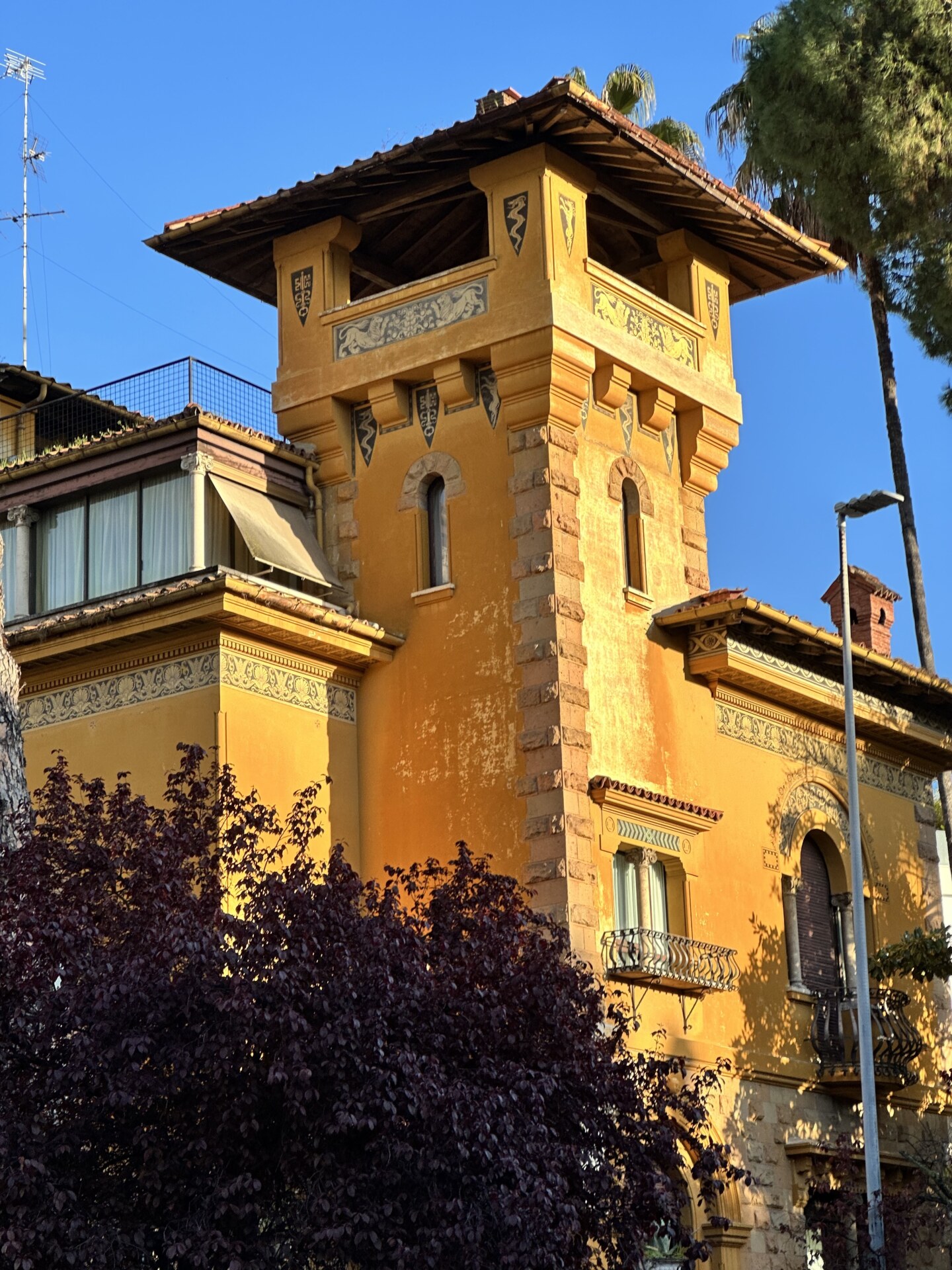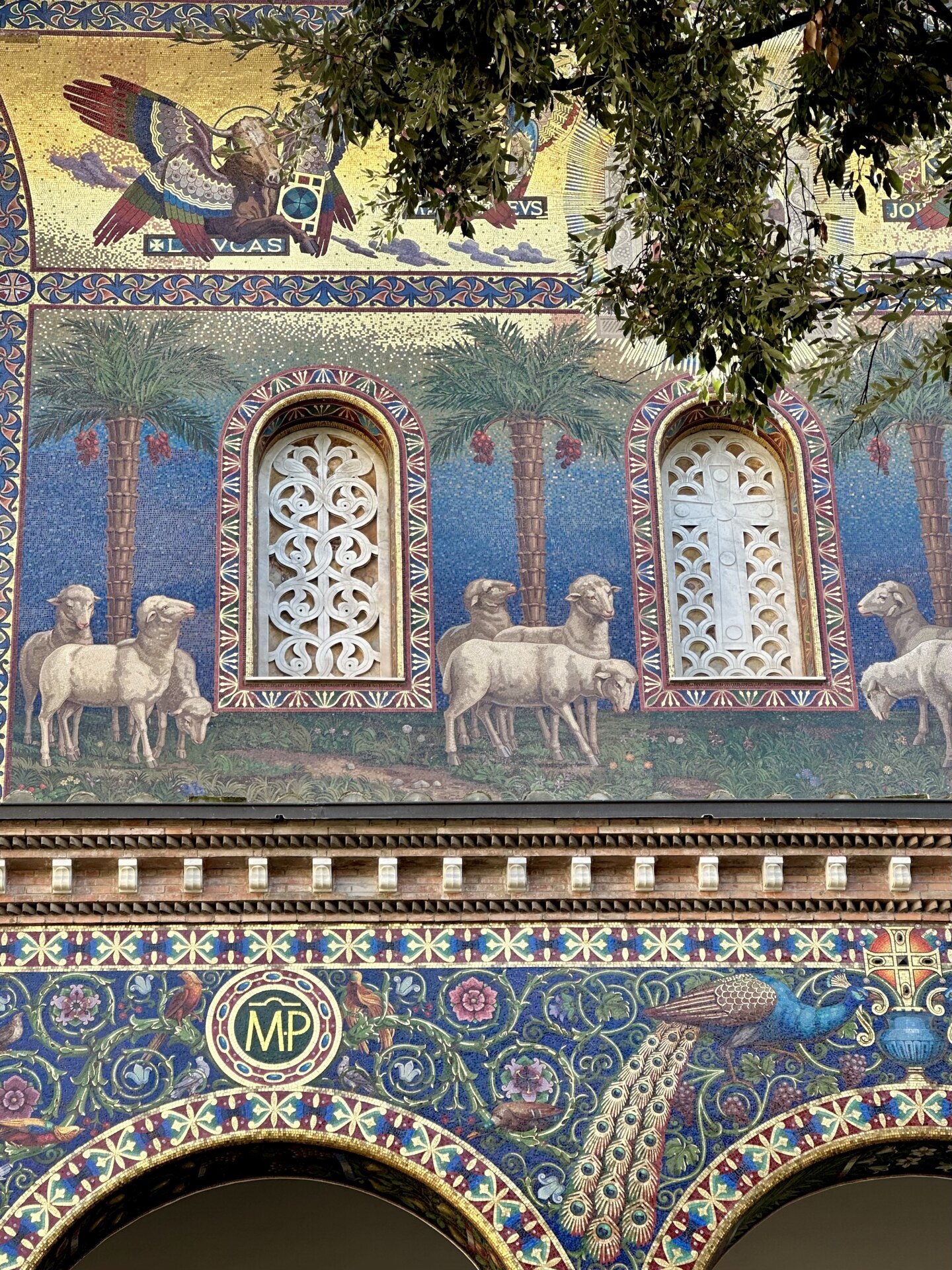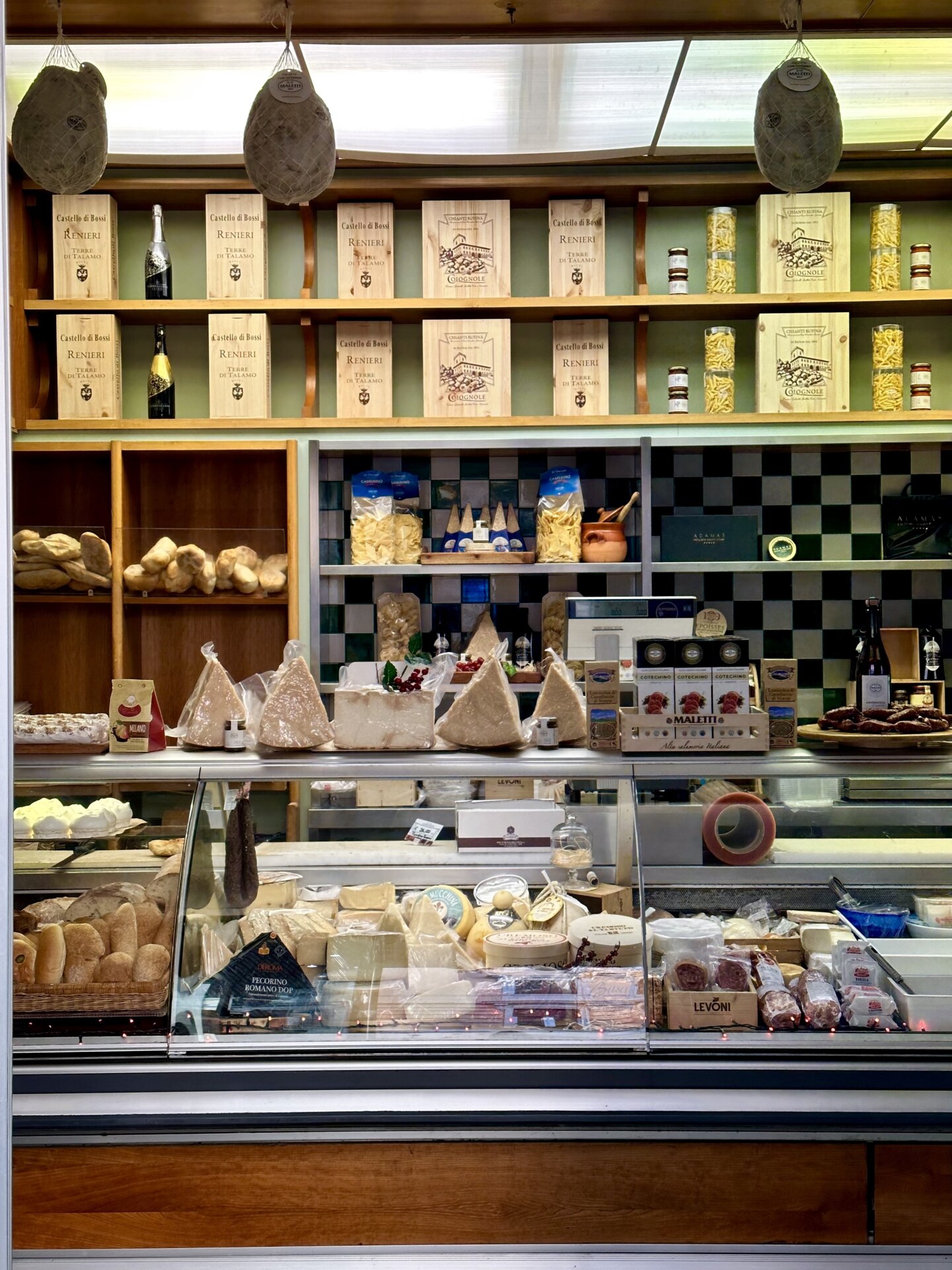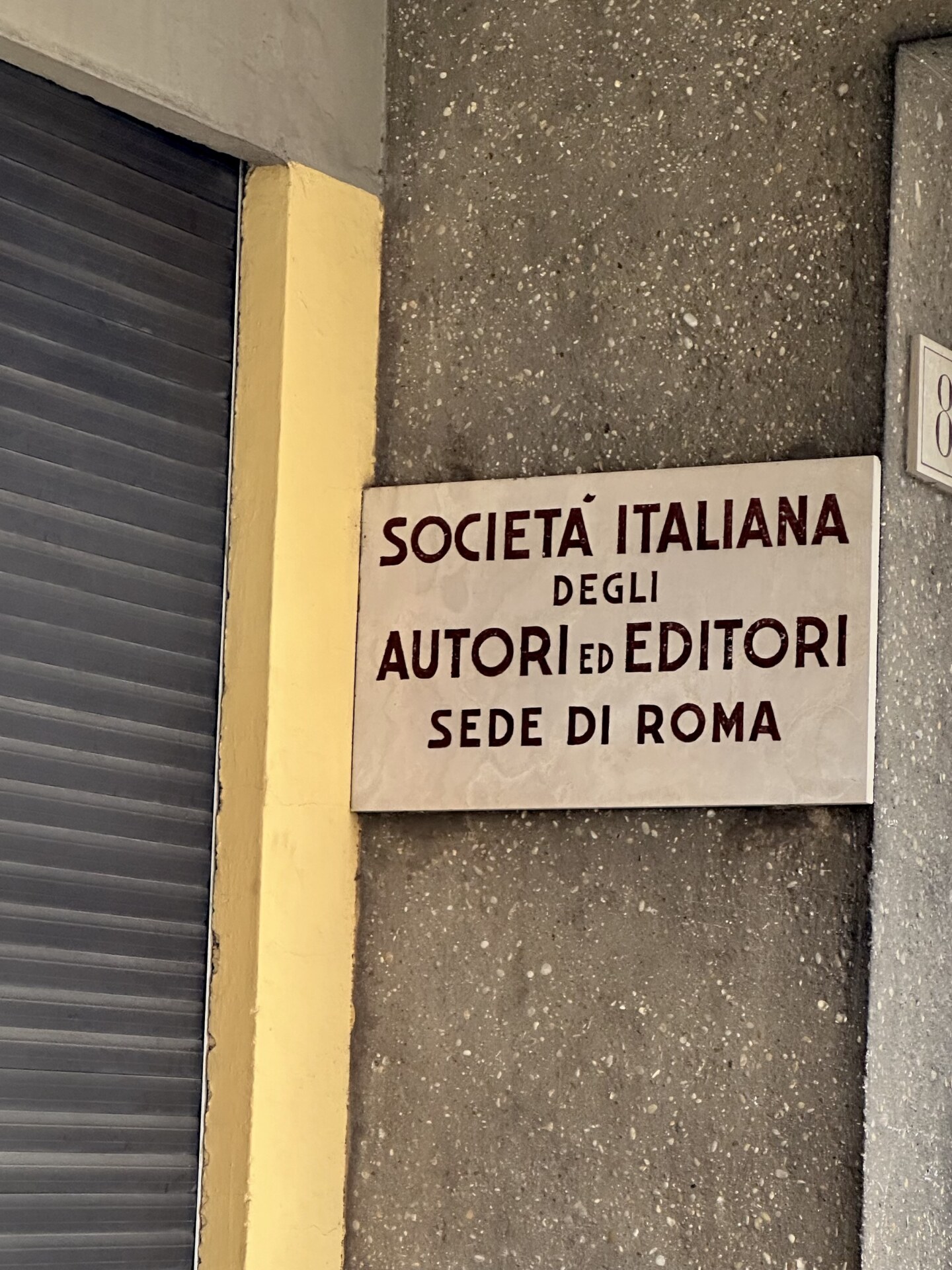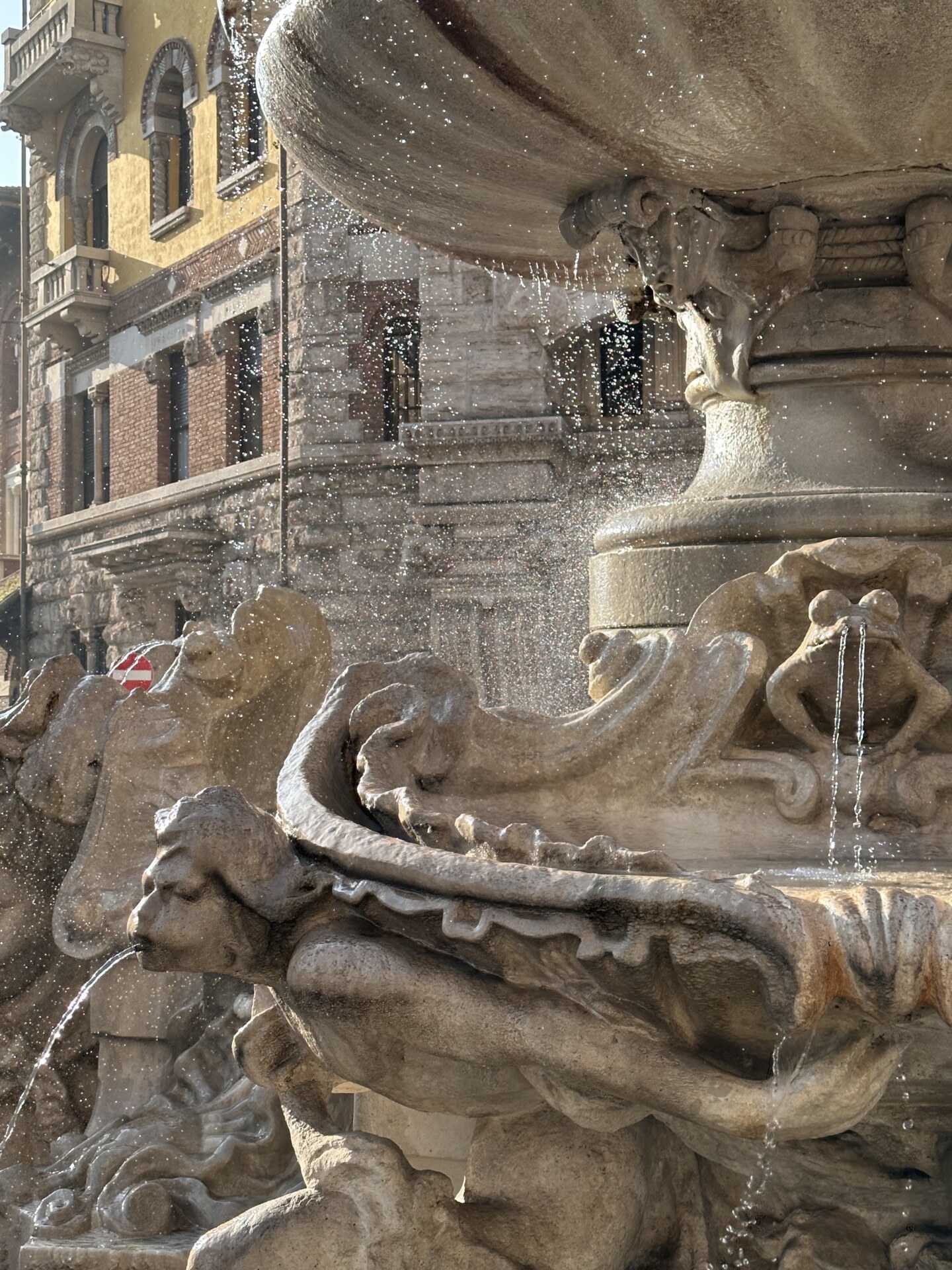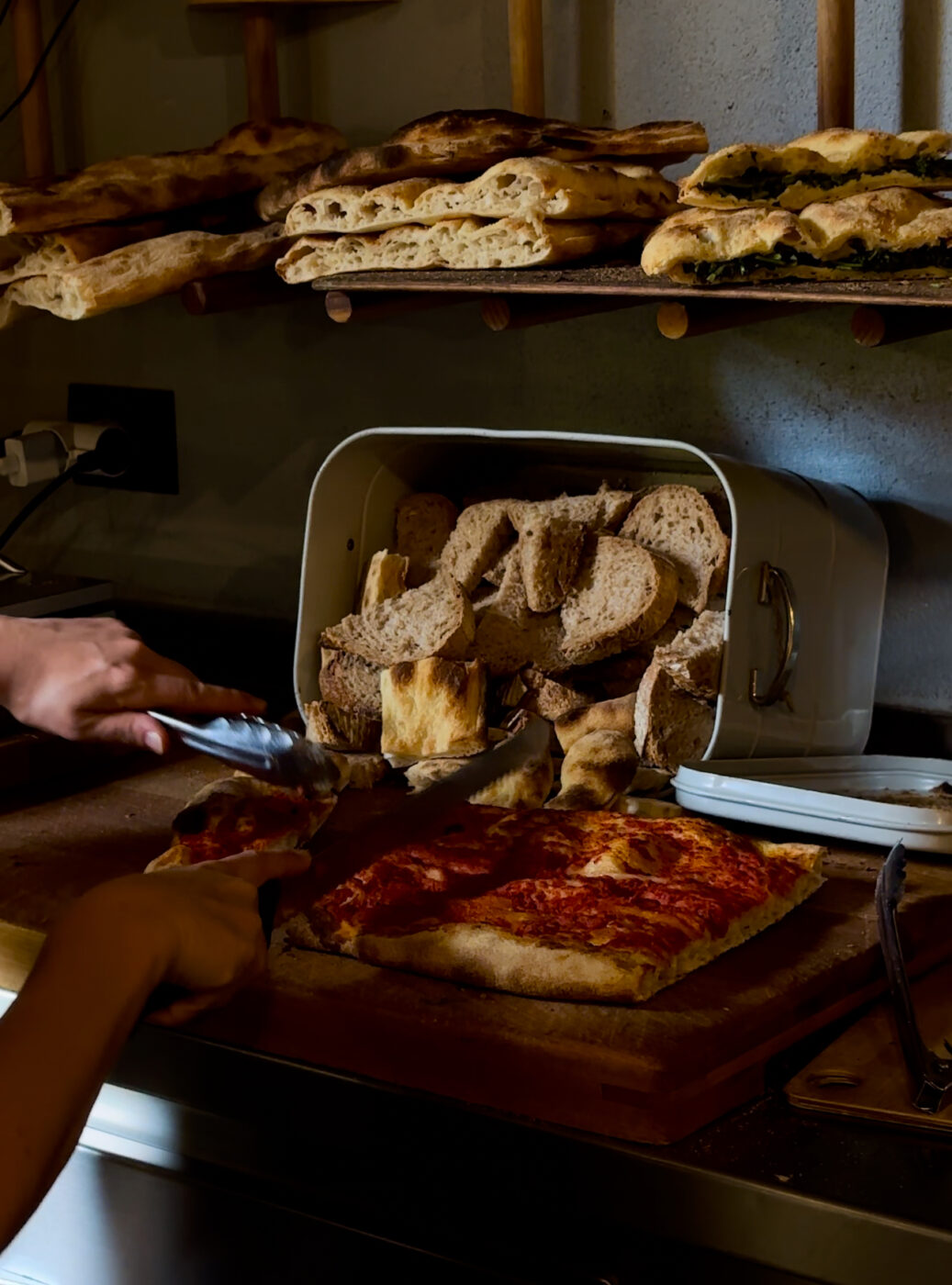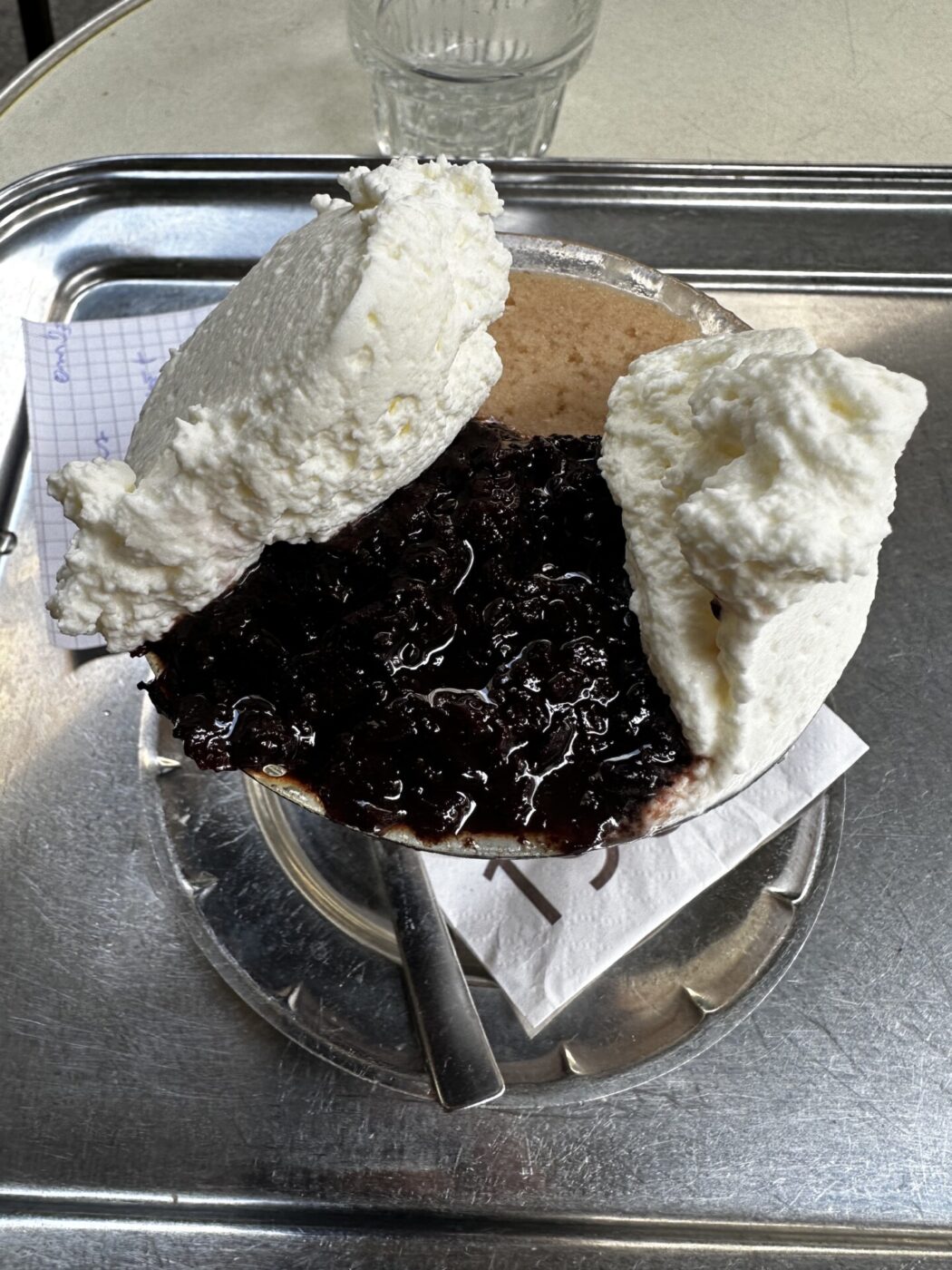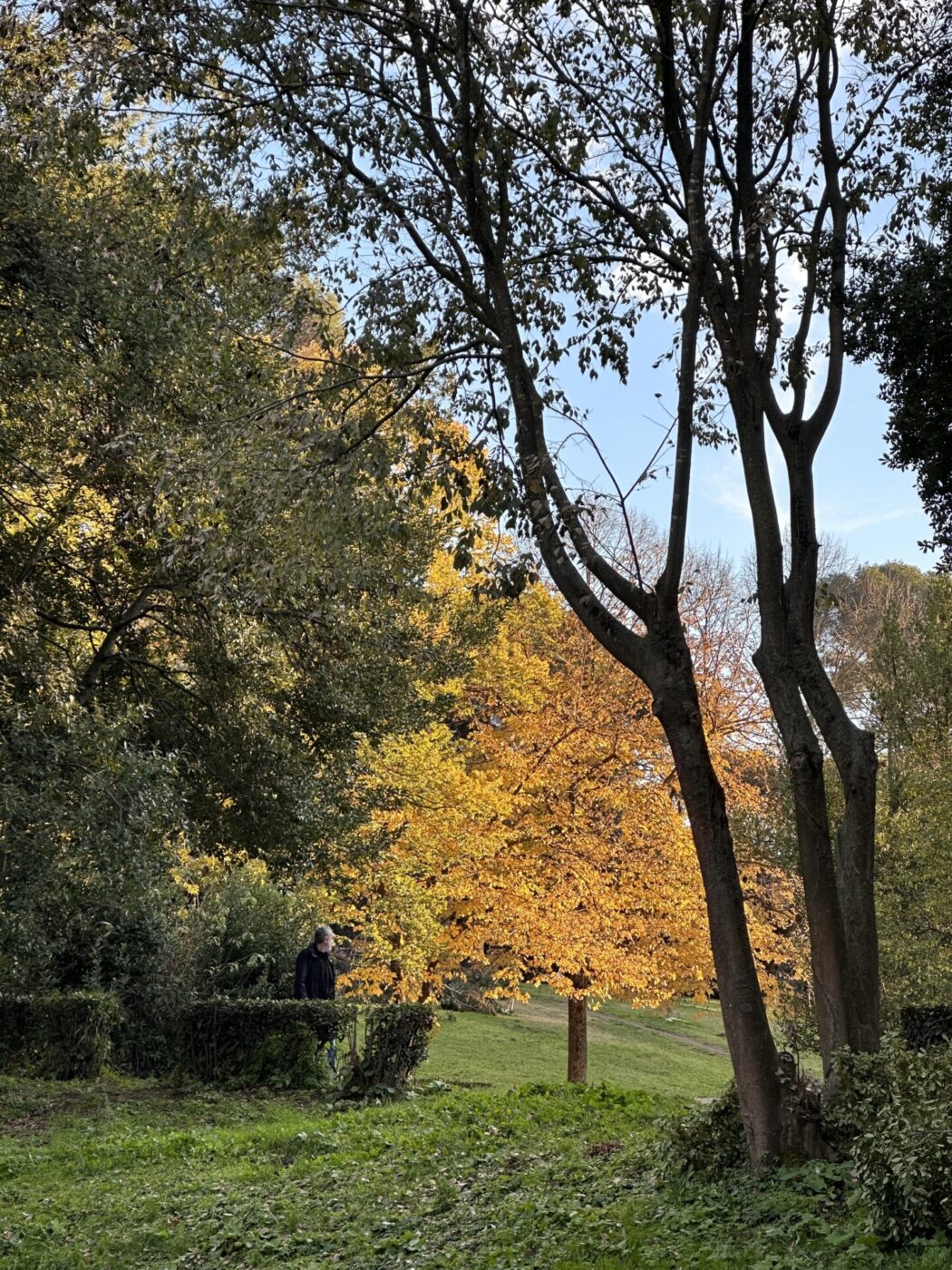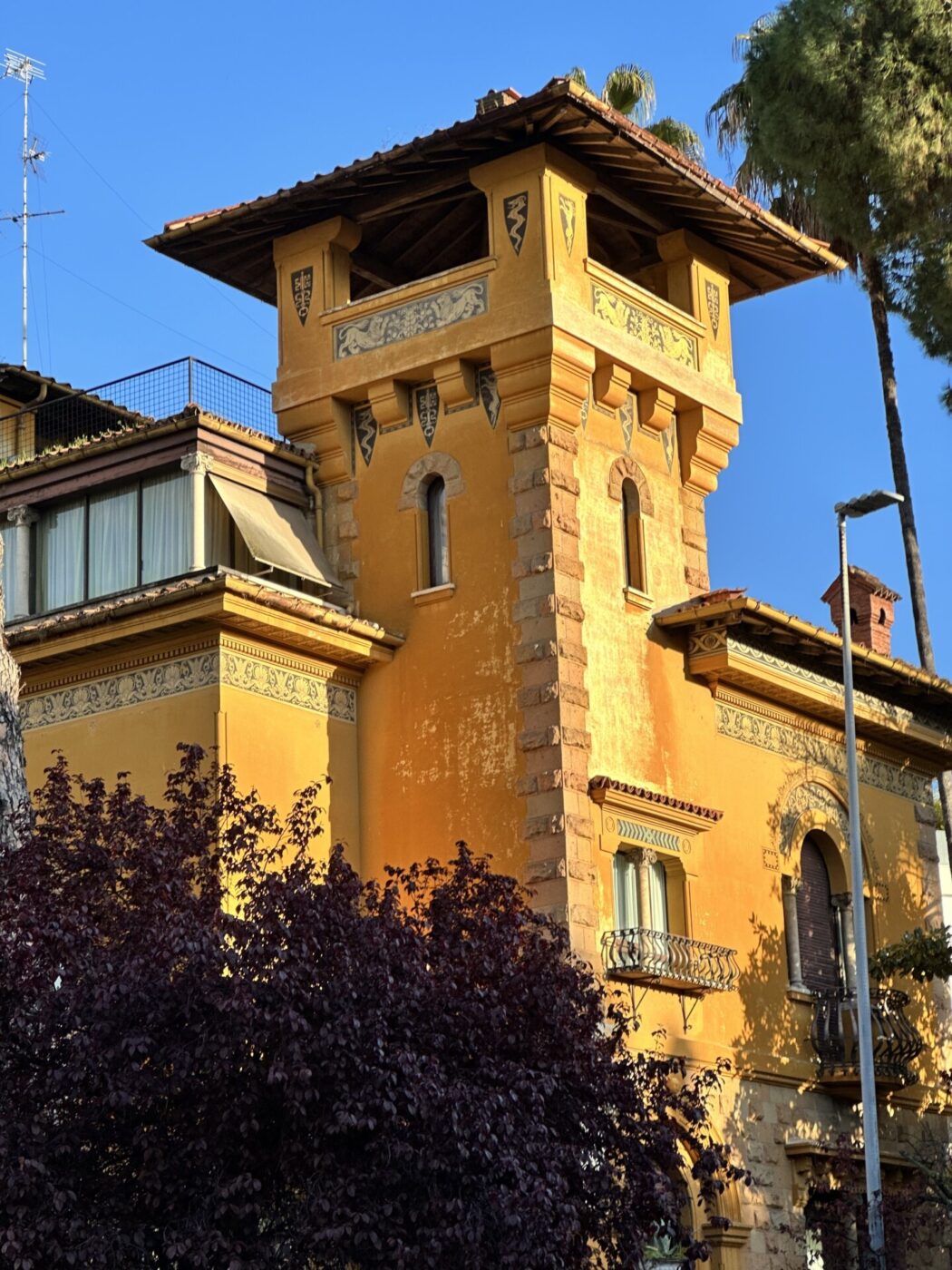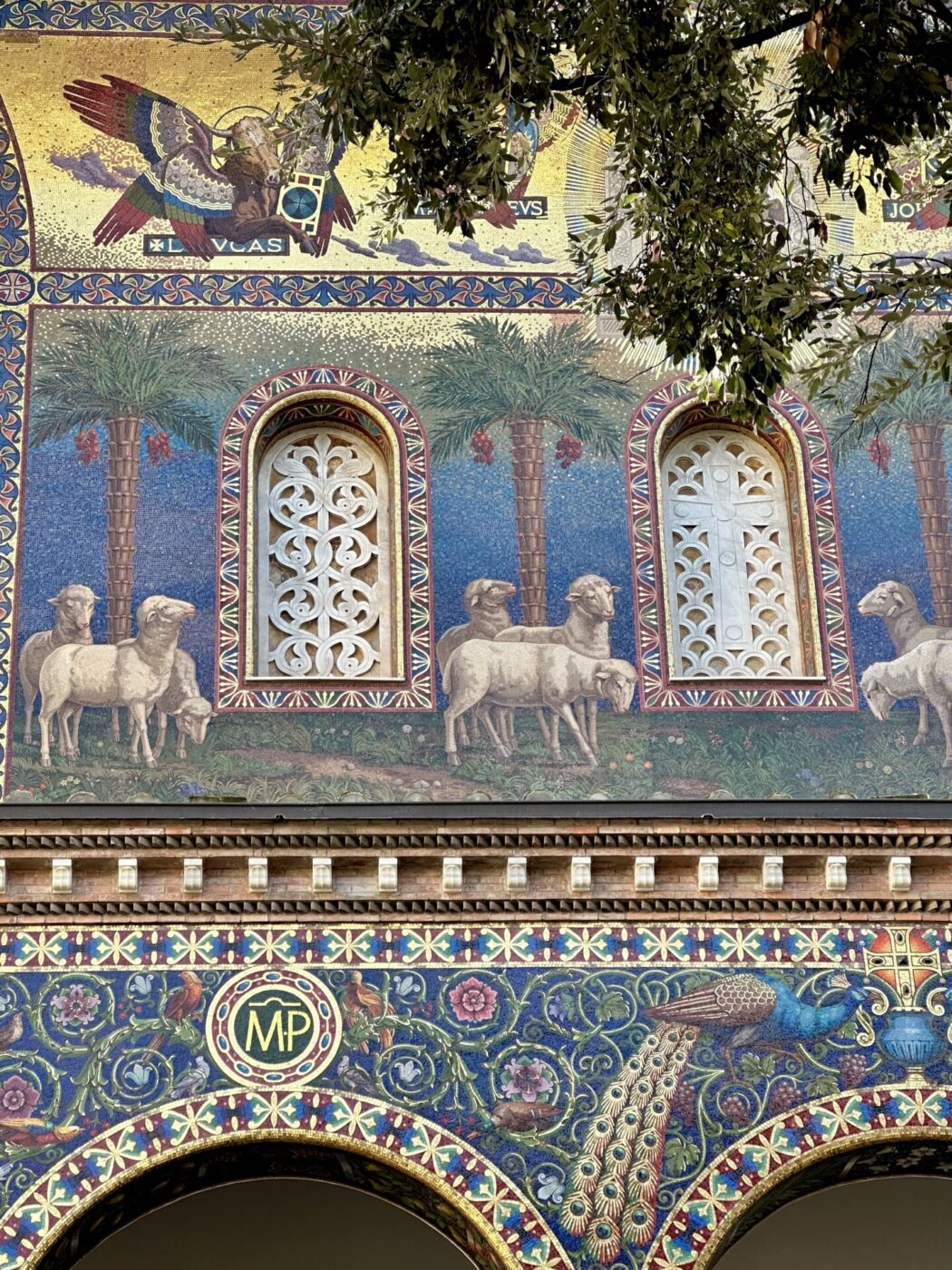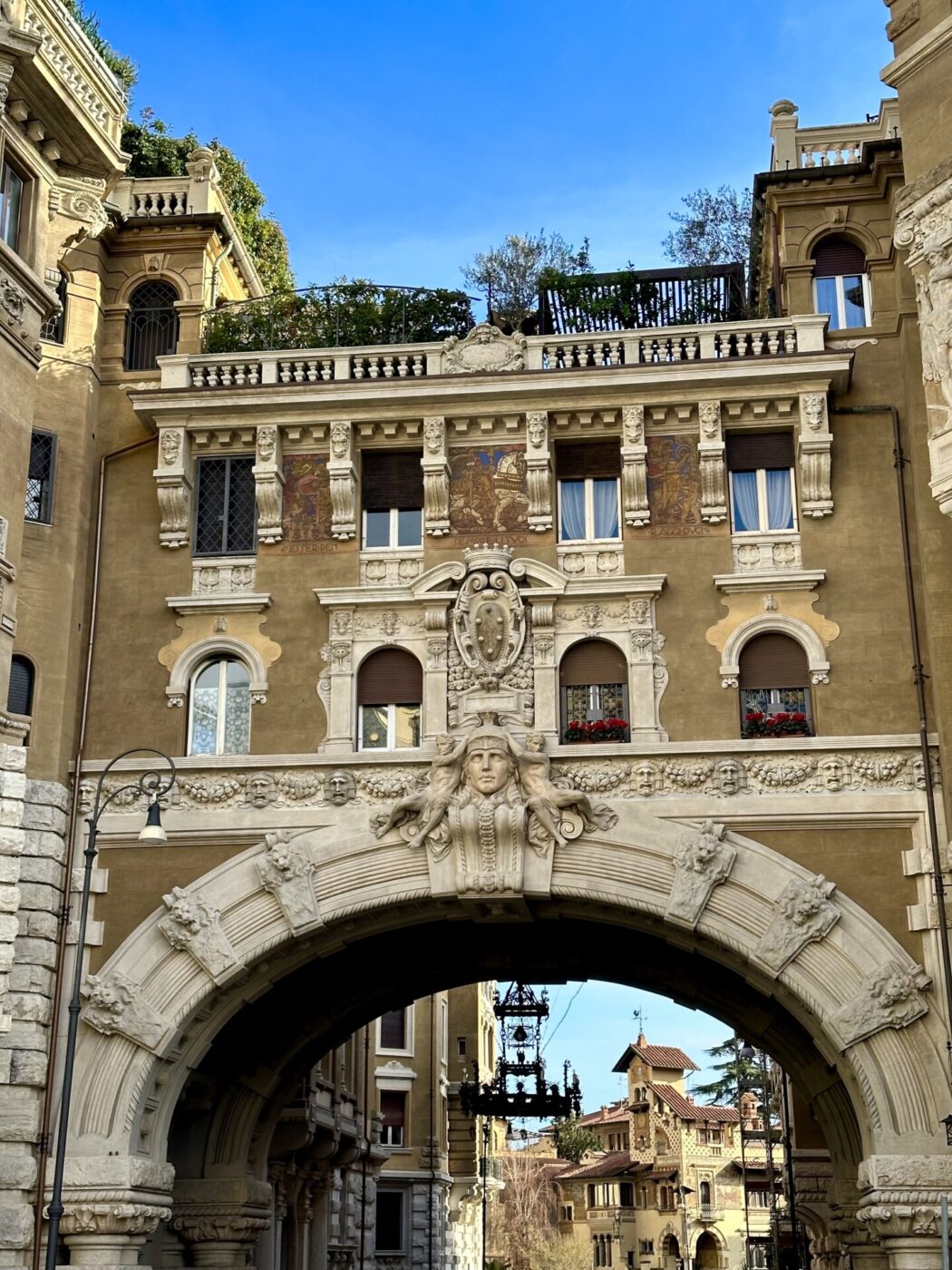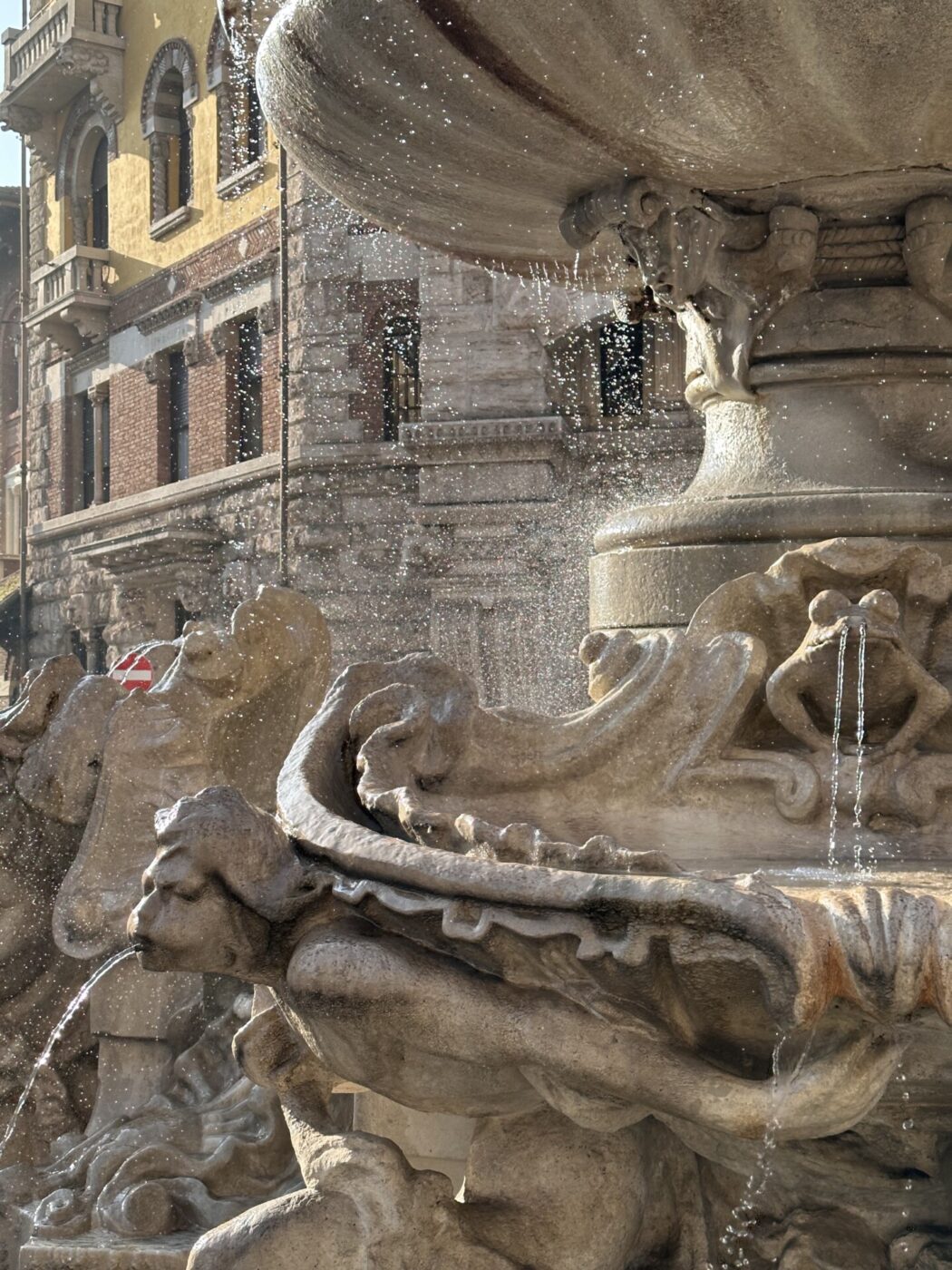Fifteen minutes from Rome’s historical center–excluding the capital’s manic traffic, of course–stands an archway joining two ambassadors’ palaces, from which a large wrought-iron chandelier descends; this arch marks the (rather grand) entrance to the quirky Coppedè neighborhood.
Describing Coppedè is hard–not just because of its beauty (which is difficult enough to put into words), but for its sheer eccentricity. To illustrate Coppedè in broad strokes is no way to do the district justice. A complex of 26 mansions and 17 small villas between Via Salaria and Via Nomentana, Coppedè counts architecture of the Art Nouveau and Art Deco styles with elements of Greek, Gothic, Baroque, and even Medieval art–a testament to the metropolis’s diverse artistic influences.
The Palazzina del Ragno (Spider Palace), of Assyrian-Babylonian inspiration, is distinguished by a large spider on its façade, while the Villino delle Fate (Fairy House) is characterized by total asymmetry, with medieval arches and friezes made by the fusion of different materials, among them marble, brick, travertine, terracotta, and glass. Opulently fictitious buildings are the norm, as are mythological creatures, rainbow-colored mosaics, and residences seemingly stacked with floors of different shapes and sizes. The Fountain of Frogs in the middle of Piazza Mincio is, unsurprisingly, covered in little stone versions of its namesake amphibian and is just a few steps from the historic Piper Club where Patty Pravo made her debut. The Beatles, after a concert in the sizzling Roman summer of 1965, even jumped in said fountain for a swim.
Designed and built between 1915 and 1927 by the eclectic architect Gino Coppedè, after whom the area is named, Coppedè is certainly Rome’s most whimsical neighborhood. Already renowned for the MacKenzie Castle in Genoa–the first striking example of his architectural style that integrated different styles and eras, from the Middle Ages to the Renaissance–Coppedè designed the housing complex for the Roman upper middle class (a work that was completed by his son-in-law Paolo Emilio Andrè after his death). Beyond aesthetics, each element is designed to be symbolic, harkening back to the history of Italian art and classical mythology.
The almost fantastical dimensions of Coppedè have inspired more than a few greats of Italy’s cinematic canon. The district definitely bewitched famed horror director Dario Argento, who used it as the location for two of his most famous feature films “Inferno” and “The Bird with the Crystal Feathers”, but scenes from other films have also been shot here, such as Francesco Barilli’s “The Scent of the Lady in Black”, Nando Cicero’s “Last Tango in Zagarolo”, and Nanni Loy’s “Audacious Shot of the Soliti Ignoti” with Vittorio Gassman. Some say its streets even served as J.K. Rowling’s inspiration for Diagon Alley.
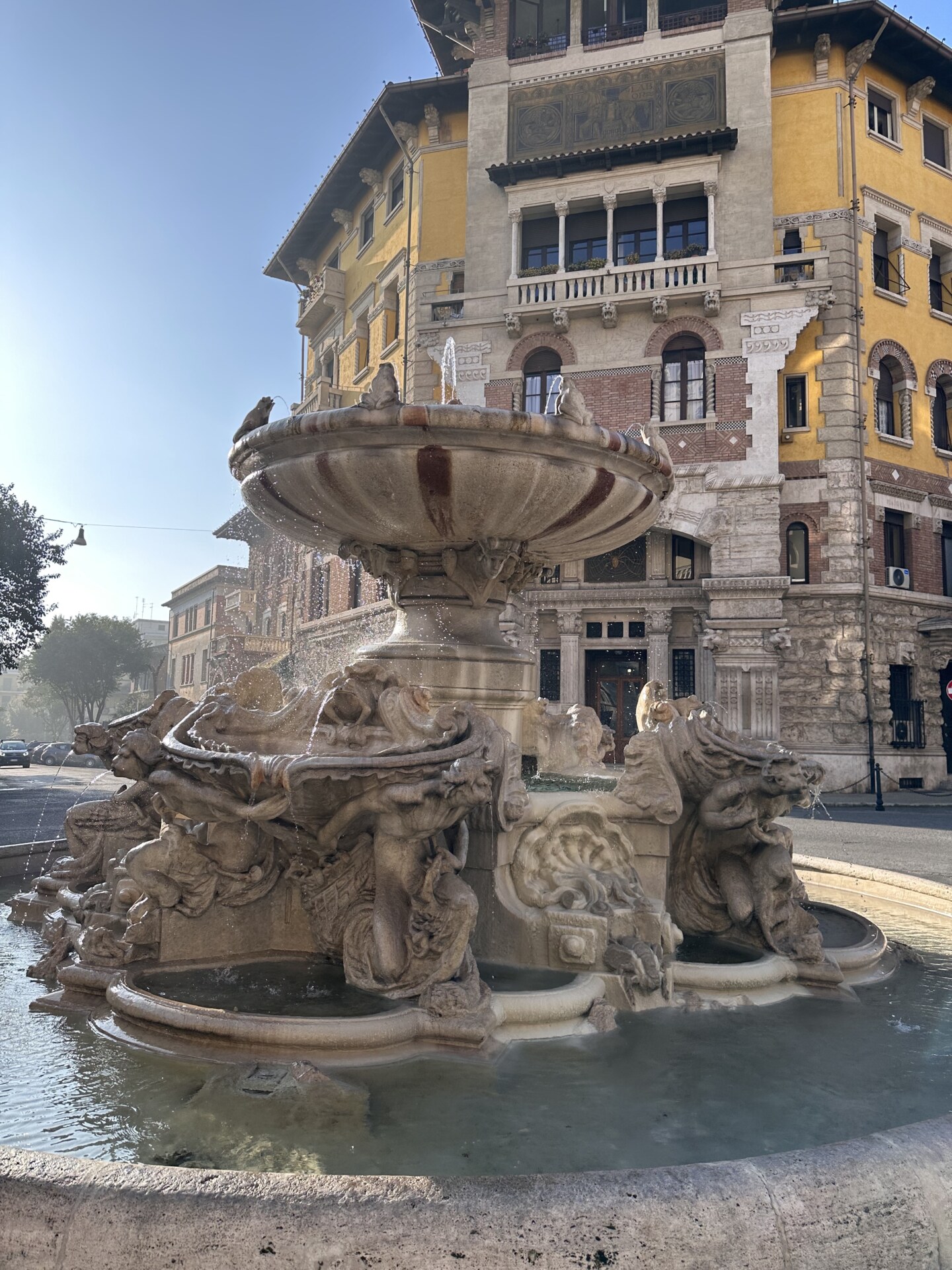
Fontana delle Rane
A DAY IN COPPEDÉ
If it’s your first time to Rome, you should absolutely spend a day in Coppedè and its surroundings, though it may not be in your best interest to stay here–if you’re looking to see all the classics, that is. To the north of city center, it’s easily reachable by a 15-minute taxi ride, the bus, or on foot–the district is about a 15-minute walk from Galleria Borghese–but doesn’t make the most efficient homebase, especially if sites on the other side of the river are in your itinerary. However, if it’s your second or third time in the capital and you’re not as pressed to sightsee, this area is a particularly great way to get a local vibe; the hip Hoxton hotel is one of our favorite choices.
Coppedè’s ideal placement at the intersection of three neighborhoods–Salario/Pinciano, Trieste, and Nomentano–means many options for breakfast, lunch, dinner, shopping, and more are within easy reach.
BREAKFAST
Santi Sebastiano e Valentino – Part bakery, part bistrot/cafè–it’s open for lunch and dinner too, and their pizza alla pala is mouthwatering–in the morning, the counter is a feast for the eyes: from more traditional cornetti to cruffins (croissant-shaped muffins filled with freshly whipped cream), from cinnamon buns to brownies, from carrot and apple muffins to their freshly baked bread, which you can have with organic butter and homemade jams (and focaccia Pugliese on the weekends), you’ll be spoilt for choice.
Pasticceria Boni – Our second favorite choice in the area, this old-school pasticceria on Via Tagliamento is renowned for its tart with cream and wild strawberries.
Panis 1890 – For those who want to have a savory breakfast, head to this tried-and-true bakery, also on Via Tagliamento. We love the old wooden counter inside, but we love the addictive red pizzette, called linguette, even more. Baked every three hours, they might just be the best red pizzette in all of Rome.
Marziali 1922 – A must for coffee lovers, this specialty coffee shop with locations on Via Po and Piazza Caprera–both a five-minute walk from Piazza Mincio–offers its blends in espresso, cold brew, and other formats that are hard to find at traditional Italian bars. If you’re hungry, don’t miss il pigolo, a simple but superlative sandwich of pizza bianca stuffed with hand-cut prosciutto cotto.
Pasticceria Natalizi – If you’re over by Marziali in Via Po, make a stop by Natalizi, one of the city’s oldest pastry shops for assorted croissants, danishes, girelle with raisans, and maritozzi with whipped cream. Next to a good cappuccino, there is always a complimentary, good-quality chocolate. For those who want to go sweeter, we like the chocolate and pear cake, tarts, fruit baskets, and their famous hazelnut cake. There’s no seating, so prepare for a real Italian-style breakfast on your feet.

Santi Sebastiano e Valentino
MORNING
Tour the neighborhood – First things first: take a walk around Coppedé and check out all the architectural eccentricities. We recommend doing so with a guide–it’ll really give you better context and understanding of the architectural intricacies–and, lucky for you, our Travel Team curates privately-guided bespoke experiences in Coppedé.
Go food shopping – There is certainly no shortage of specialty food shops in the neighborhood. Start at Specialità d’Abruzzo, in Via Tagliamento, where you can find Pelino sugared almonds, a typical sweet called Parrozzo made with almond flour and covered in dark chocolate, Verrigni pasta, and the products of the Caseificio Reginella d’Abruzzo. Next door is Torrefazione Enoteca Giovanni de Sanctis–the shop windows really take you back to the old days–which sells specialities ranging from liqueurs to tuna from Carloforte. The sign on the door of this emporium still bears the text “Drogheria” of yesteryear, and inside can be found the original furnishings of the 1920s. You can’t fail to hit Le Bon Boulanger, a slightly secluded spot in Via Collalto Sabino, founded in 1955 as a bread shop that, today, is a true delicatessen with the finest products of regional traditions and a great wine selection. For more quality shopping, Sciccherie, in Via Metauro, is a great place to pick up cured meats, cheeses, and wines for aperitivo.
LUNCH
Osteria Chiana – A top choice for a traditional Roman lunch. You must try the amatriciana, the fried bollito meatballs, and one of the many seasonal side dishes–though you better save room for the crostata di visciole, or sour cherry tart.
Il Garigliano – This Sardinian restaurant is a great pick if you’re looking for a fresh, seafood-focused menu.
Pescheria Sor Duilio – Another excellent choice for seafood, Sor Duilio has the daily catch on display for all to admire–soon to be grilled, baked, or fried for your lunch.
Amaranto – Come here if you want lunch on the fly. You’ll find supplì and pizza by the slice; the two young owners trained at legendary Gabriele Bonci’s school, and the pizzas they offer range from super classic to seasonal specialities.
La Madia – This historic grocery shop, snack bar, and pastry shop has been part of the Trieste – Parioli district since 1951, offering an oasis of excellent gastronomy. For lunch, La Madia operates as a tavola calda, with an array of freshly made pastas, meats, and vegetables.
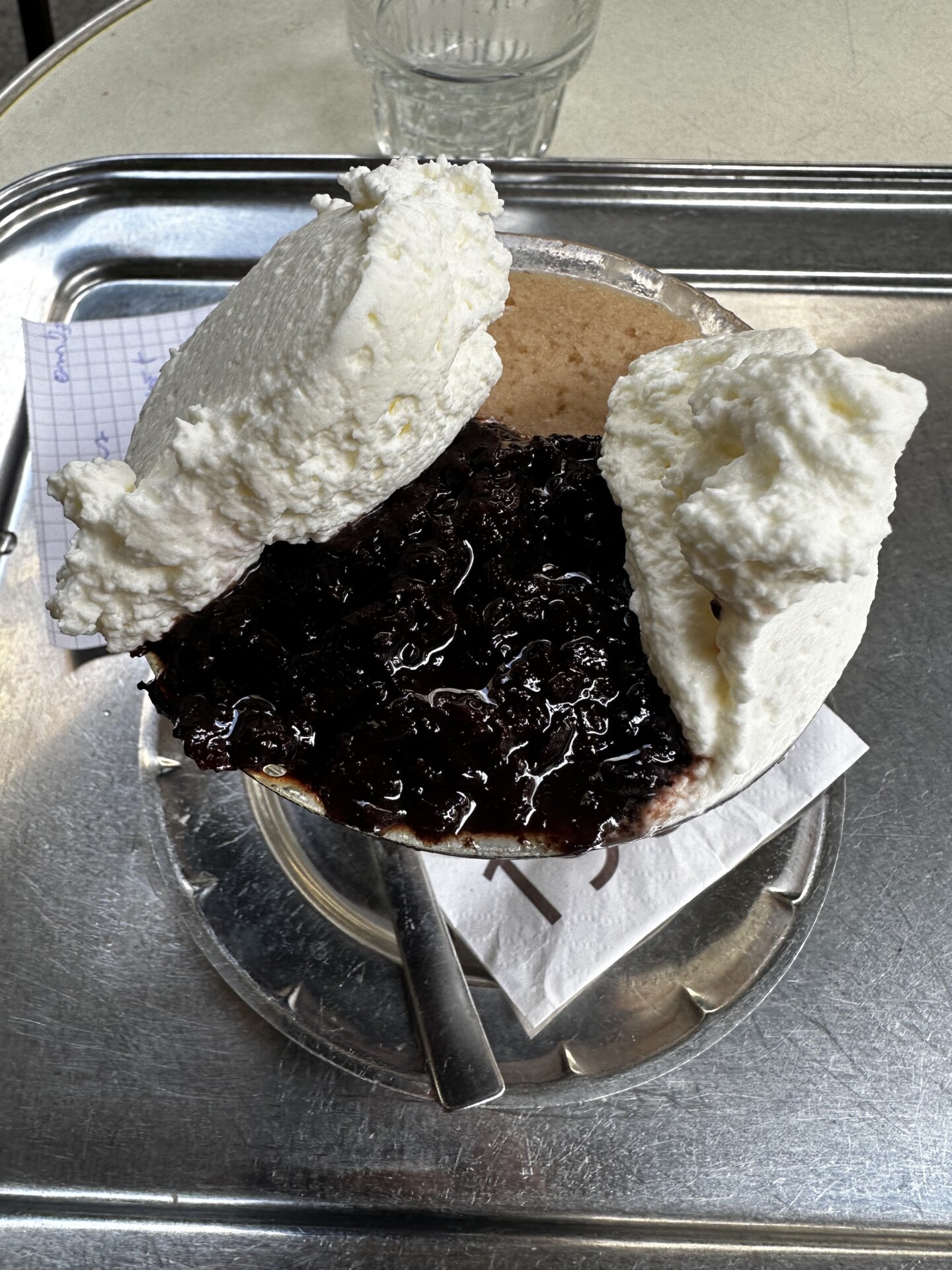
Cremolato at La Casa del Cremolato
AFTERNOON
Shop for sweaters (if it’s cold) – Historic shop Gentleman di Giancarlo Sabatello, founded in 1950 by Mario Sabatello, may carry various accessories–including gloves, scarves, and ties–but the real draw is the sweaters. Find both men and women’s options in sumptuous cashmeres and warming lambswool.
Cool off (if it’s hot) – No summertime tour of the neighborhood is complete without a stop at Lemoncocco, the kiosk in Piazza Buenos Aires (known more simply as the “square” by those in the area, as it stands in stark comparison to the city’s more common circular or oval-shaped piazzas). Refresh yourself with their coconut and lemon drink, rigorously prepared on the spot. If you also feel like ice cream, head to La Casa del Cremolato in Via di Priscilla for a cremolato; they say they invented the stuff on April 1st, 1966, when founder Umberto De Angelis realized he’d forgotten some strawberries in the freezer for a while. While a granita is a mixture of ice, sugar, and fruit juice, a cremolato is made with large chunks of fresh fruit, leading to a deeper and fruitier flavor. Now, flavors range from wild strawberries to chestnut and from pistachio to almond, and pair extraordinarily with a dollop of freshly whipped–non-sugary–cream.
Stroll around Villa Ada, a lesser-known alternative to Villa Borghese – Coppedè is just a few minutes’ walk from the Via Panama entrance to Villa Ada, a lush, large park characterized by holm oak woods, cork oaks, pine groves, and meadows–and the occasional squirrel, hedgehog, wild rabbit, and bird (of which there are many interesting species). Best known as the former residence of the royal Savoys, the park now has an eclectic mix of historic buildings to check out, among them the Temple of Flora, the Villa Polissena, the Royal Stables, the Swiss Chalet, and the Gothic Tower. It’s the perfect place for a walk, jog, or picnic away from the crowds of its nearby counterpart Villa Borghese.
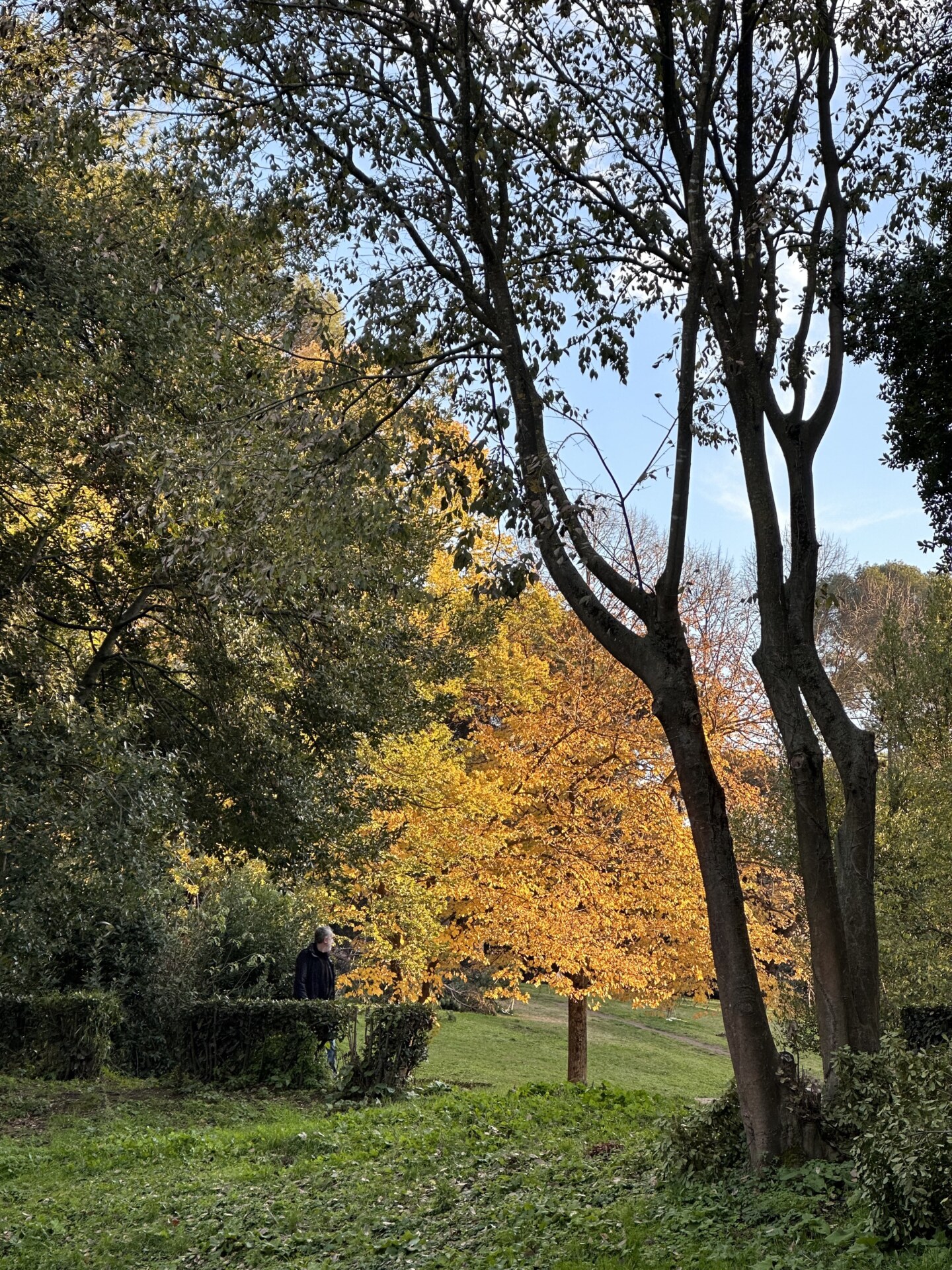
Villa Ada
APERITIVO
Enoteca Arcioni – This wine shop is a landmark in the neighborhood with its bar, small ice-cream parlor next door, and shelves with wines from across the country packed to the rafters.
The Hoxton – For a more contemporary experience, The Hoxton hotel serves cocktails like the Folk Negroni with Woodford Reserve bourbon, Martini Rubino, and ginger liqueur–paired with small bites.
DINNER
Bottega Tirso – This small bistro offers an ever-changing seasonal menu with creative plating.
Limerick – One of the best burgers in Rome, the smashburger here is made with Danish beef, sandwiched between traditional milk buns, and accompanied by french fries (or sweet potato fries) and made-in-house dips. Also fantastic is the Chicchirichì, a sandwich of fried chicken breaded with corn flakes, accompanied by smoked provola, guanciale, and tartar sauce.
Lievito Chiana – The best pizza spot in the area, Lievito Chiana is helmed by Stefano Callegari, the lauded inventor of the Trapizzino.
